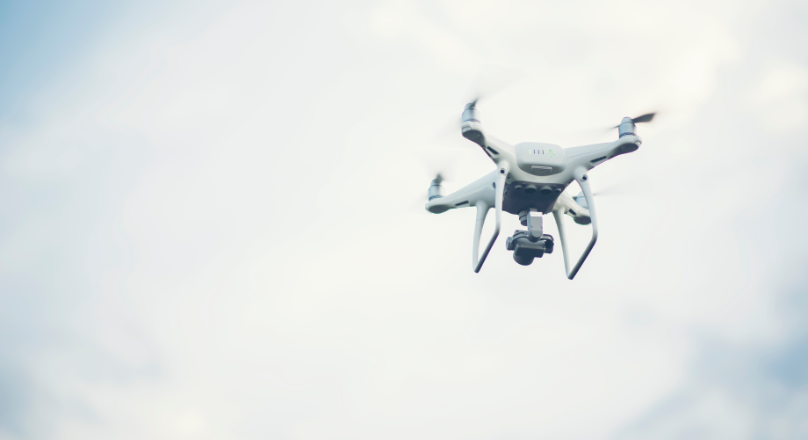Results for ""
In his bestselling book Sapiens: A Brief History of Humankind, Israeli author and historian Yuval Noah Harari explains how true agricultural revolution started out with wheat – first growing as wild grass in the Middle East and then quickly mushrooming to every major part of the world. Agriculture, in 200 years, has undergone more change with the introduction of machines paving way for its industrialization. Today, the sector is preparing for another major shift – digitally.
If there’s anything we can learn from Sapiens, its that agriculture has evolved with man over the years, proving its resilience and tenacity as a sector when faced with winds of change. An integral part of this change is the farmer – be it in India, Israel, Vietnam or Brazil – the humble farmer too has evolved over time and has bravely adapted. The nature of the sector and the perseverance of the farmer to reap yields from his farms have given sufficient impetus to technologists and innovators to develop solutions that would make agriculture agile, smart, and profitable.
While farmers have continued to adapt to changing market and industry dynamics, we must also keep in mind how tough agriculture is as a sector. It requires a lot of labour, costs, investment in terms of time and a long-standing commitment for results. Over the years, depletion of the ozone, soil, air have drastically affected agricultural output worldover. Lack of sufficient water for instance, is one of the biggest deterrents in agriculture. Rainfall patterns have changed due to climate shifts, adversely affecting farm output. For a man who can forecast rains and other weather conditions merely by looking at the skies, today’s farmers are hard pressed to make such confident bets on the weather and other conditions that are required for the well-being of their crops. Technology is more relevant than ever to fill this gap, and this is where precision agriculture comes in.
Precision agriculture is a data-driven approach that provides farmers information on the exact amount of resources he needs to deploy to farm and till land, for optimum output. Does he add more water or less? How arid is the soil? How can he regulate the amount of fertilizer that goes in a specific kind of crop? What kind of challenges could he possibly encounter and how does he prepare for this? These are some of the challenges that technology can address – with great precision. Thanks to the advent of technologies like Artificial Intelligence, IoT and more, it has become easier and faster to predict farming patterns and preempt the kind of assistance a farmer needs.
Precision farming is known to enhance agricultural productivity, prevent and limit soil degradation, control application of chemicals, use water efficiently, reduced cost of production and overall, improving the socio-economic status of farmers.
The farm of today is yielding results, driven by sensors, robots, drones and collective intelligence. Let’s take an example of corn growing in Kenya. The East African nation has two major growing seasons for corn, and a lot of the crop growth and management is led by intuition of farmers. An AI-based project delivers information to the farmers on seed depth, location, soil density, nutrient levels and more – this data helps farmers increase yields from six 90kg bags of corn to nine.
Using AI, farmers can now analyse a variety of factors like temperature, soil conditions, weather patterns, seed quality and more. It can analyse the kind of pesticide a crop and the soil can handle, and direct farmers to use just the right amount. The use of cameras through drones in fields provides vast amounts of data to the farmers based on which they can make informed decisions on how best to manage their crops.
Startups have been excelling in the field of precision agriculture, and are seeing adoption levels rise over time. Bangalore-based drone company Aerologiks sees their analytics-driven drones being used extensively for agricultural purposes. They have deployed their drone to collect critical data from an arecanut plantation in India. Typically, an acre of an arecanut plantation contains 500 trees. Each tree spans a height of nearly 15 metres, and labourers have to manually spray pesticide on each tree. It would take farmers nearly two days to spray trees with pesticide on a land spanning one acre. With Aerologiks’ AI-enabled drone, this time was cut down to three hours. The drone, loaded with a pesticide container, was able to scale the height of these tall trees, spray just the required amount of pesticide – based on data computed by the drone – saving labourers the risk of exposure to chemicals and farmers unnecessary labour costs.
Another startup called Aibono is leveraging AI to help improve yields and farmer income, specifically for a range of small, perishable crops like lettuce, broccoli and carrots. Predicting demand and controlling supply has become simpler now with the use of AI, and predictive models around existing datasets. Even seed sowing is carried out based on consumer data patterns, in a bid to avoid wastage and manage the prices competently for the farmer.
A report by NASSCOM stated that there are about 450 agritech startups in India, and this space has seen funding close to $248 million until June 2019. Startups are able to scale with ease, and are being supported in product development by technology majors as well that are developing agile, scalable solutions. Microsoft started Farmbeats as a research project in 2014, and today, it is available as a digital platform called AzureFarmBeats. Founded by Ranveer Chandra, FarmBeats helps farmers harness actionable insights using AI and ML-based models. AzureFarmBeats works with large farms, and its AI models ingest satellite and drone images to provide insights on farm health, allowing farmers to make precise decisions on farm & crop management.
The future of farming lies in cognitive insights. Precision agriculture is all about the right place, right time and right produce – and the days of guess-timation should be trailing us. There are a variety of technological tools at our disposal and this cavalry can make monumental changes in agriculture in India






